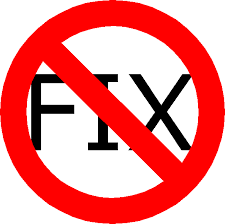 Sarcasm can be a way to bring humor and playfulness into a relationship. There are some relationships where sarcasm causes little or no harm. If this is how sarcasm shows up in your relationship, no worries. Frequently, however, we see sarcasm being used as a weapon to put a partner down and make them feel small. Weaponized sarcasm is mean and unkind. The marriage researcher, John Gottman, points out that sarcasm (and its accompanying eye-rolling) is often a sign of contempt. And, according to Gottman, unchecked contempt is the number one indicator that divorce is likely. Sarcasm is derived from the Greek word “sarkazein” meaning “to tear or strip the flesh off.” Sounds painful, huh? David Dunning, writing for the "Science of People," says that "Sarcasm is not only hurtful it is also the least genuine mode of communication." He goes on to say that people use sarcasm for three reasons: “Insecurity: For some, using sarcasm or teasing is a way of avoiding confrontation because they are afraid of asking for what they want. Latent Anger: Sarcasm can also be passive aggressive or a way to assert dominance. Someone who is angry or upset but is too afraid to bring it up will often use sarcasm as a disguised barb. Social Awkwardness: When people are not good at reading those around them or are not sure how to carry on a conversation, they will often employ sarcasm hoping it sounds playful or affectionate. Clifford N. Lazarus PhD reports in Psychology Today, “When it comes right down to it, sarcasm is a subtle form of bullying and most bullies are angry, insecure, cowards.” In the work we do with couples, we are acutely aware of the cost of sarcasm in relationships. We work from one main premise......TRUST is the foundation upon which vibrant, fulfilling relationships are built. Weaponized sarcasm is a passive aggressive communication style that undermines TRUST. It is an indicator that the relationship needs something different….sooner rather than later. If you’re in a relationship where the trust is starting to crumble, look to repair your relationship’s foundation by cutting out the sarcasm. Don't hesitate to name it. Nothing can make sarcasm fade away quicker than shining a light on it and stating exactly how it makes you feel. Let your partner know how their comments impact you and your relationship. If you’re guilty of tossing some sarcasm bombs from time to time, own it. And, commit to doing your best to honor your request to knock it off. There’s more. It’s not enough to simply stop using sarcasm. Each partner must work to substitute sarcasm with direct, honest, communication. Take a look at where you might be using sarcasm to avoid directly asking for what you want or genuinely expressing something that is upsetting you. If your partner is mystified by all of this, ask them if they would be willing to have you help them by saying something like, “Hey, there’s that sarcasm again. What is it that you really want?” This will take practice. So, allow for plenty of mistakes and messiness. Mistakes and messes are how we learn. If both of you are willing to practice reducing your use of sarcasm and increase your level of honesty, your relationship will be better off. Even if you are one of this couples who doesn’t feel that sarcasm is a big deal, most relationships can benefit from an increased dose of direct, honest communication. To learn more about couples coaching, click here
0 Comments
 When your partner is struggling with something, a natural tendency is to step in and try to “fix” whatever is wrong. This usually involves advice around the need to take some kind of action. Afterall, we don’t like it when we see our partner in pain, sadness, anger, frustration…. When our partners are in these kinds of emotional states, some of us see a fire that needs to be put out…now! “Quick, there’s a fire over there, grab the hose, put it out before it spreads!” Within every relationship, there tends to be one person who is “the fixer.” Although, this tendency can certainly be found in anyone. The “fixer” often judges emotions like anger and sadness as “bad.” The fixer’s solution is “to do” something to help make these emotions go away. Have you ever proposed what you think are wonderful solutions to your partner’s “problem” only to see the sadness or anger intensify? That’s a really good clue that this ain’t the time for fixing! Emotions like anger and sadness are the body’s way of responding to a specific circumstance. With anger, there is usually some kind of boundary that has been crossed. With sadness, some kind of loss. The most direct route to experiencing happiness and joy again is to allow your partner to experience the full force of their anger or sadness. The body knows this. And, when a well-meaning partner steps in try and short circuit this process with a “fix,” the body knows what is happening and resists – often ramping up the anger or sadness as way of saying “No, getting to sunnier days means letting the storm clouds do their thing first!” The good news is there is a way that each of you can navigate through these rough seas that will help grow your relationship and increase your intimacy. For the partner in distress, if you are able, let your partner know up front what it is you want from them. If you aren’t looking for a “fix” tell them that. It may sound something like this, “Honey, I’m having a really challenging time with someone at work. I just need to vent. Could you just listen for a while, I’m not really looking for advice?” For the partner looking to provide support, ask your partner what they want. “Just to be clear, how can I best support you? Do you want some advice or are you just looking to vent to someone who really cares?” A conversation that doesn’t involving “fixing” involves simply “being with” your partner. It may involve words of affirmation like, “I can see why you’re so angry” or “It’s okay to be sad.” Simply letting your partner know that you are there for there for them, you hear them, and that they aren’t wrong for feeling their feelings can go a long way in bringing you closer together as a couple. You may be tempted to lean in and give some physical assurances like a hug. Tread lightly here as well. Hugging can have the same effect as “fixing.” When your partner is experiencing emotional pain, it is again best to ask what they need from you. Ask before hugging. Explain that you’d like to express your love and support with a hug and that you aren’t trying to fix anything. And, then, respect your partner’s answer. Of course, there are times when your partner may really want you to just tell them what to do, to take care of them. It’s just that for many of us, the default is “to fix.” And, when that doesn’t work or isn’t welcomed with open arms, we can get resentful and disconnected from our partner. When you can set aside what you think is best, and get really clear on what your partner wants, your relationship will thank you. We have conversations with ourselves all day long. “What just happened?” or “What’s going to happen?” are common themes. Oddly enough, the story that often gets left out is “What’s happening right here, right now.” When we leave out what’s happening in the moment, we are missing out on, well…. everything. And, that includes our relationships. Quick lesson: What is mindfulness? Answer: Being fully present in the moment. End of lesson. Told you it was quick. You see, there’s nothing “woo-woo” or “out there” about mindfulness. In fact, mindfulness is very much “right here.” It’s a simple concept really. And, so difficult for many of us to be. Relationship literally means “the state of being connected.” When we aren’t mindful in our relationships, our relationships fall apart. If you’re eating dinner together and one of you is thinking about the mess at work tomorrow and the other is thinking about a fight they just had with a friend, there’s not much mindfulness going on at that table. Couples have become so good at not being mindful that they can have whole conversations without hearing what each other is saying. Put enough of these experiences together, and you are putting your relationship on autopilot. Relationships on autopilot feel boring, old, and stale. They feel like something is missing. Well yeah, the “state of being connected” is missing. Newsflash: Without a “state of being connected” you ain’t got a relationship. So, how do you get more into connection? Anyone?? If you said something like “be more mindful or more present” you’re on the right track. For the next minute, close your eyes and just concentrate on your breathing. If some thoughts come in – don’t worry about them – just notice them and let them go – continue focusing on your breathing. Go ahead and do that – I’ll wait. Congratulations! You were just mindful! Notice how you feel during and just after this exercise. The next time you are with your partner try bringing that kind of presence to your relationship. Keep in mind that this is a practice. You’re not going to be perfect at this mindfulness stuff, not many are. And, the goal is not perfect. The goal is to be more present than you were. Being mindful is challenging not because paying attention to what is in front of us is particularly difficult. It’s challenging because we forget to do it. Here’s an idea: Set a reminder in your phone to take a few deep breaths and get present. One good time would be just before you connect with your partner, say, before getting home from work. You could put a “Get Present” sign on your bathroom mirror, door to your house…you get the idea. The next time your partner wants to have a chat, give the same kind of focused attention to your partner as you give to your breath in this exercise. Notice what’s different about your relationship when you are more mindful. And, consider sharing what you are up to with your partner. You can even do a minute of focused breathing together – it’s a great way to get connected to each other rather than to those stories about the past and future running in your head. Let us know what happens. We’d love to hear from you.  Couples that feel stuck and wanting change in their relationship are often also experiencing emotional pain. Until the pain is fully recognized, experienced, and released, the couple will likely remain stuck. What makes matters worse is that we can use our “stuckness” as a weapon in our relationships. We can dig in our heels hoping to make our partner feel the same pain we are feeling. Sound familiar? If it does, know that you are not alone. It’s a thing. None of us feels good about it, and we all do it – granted, some more than others. Ok. So, what would it take to stop weaponizing being stuck? What would it take to stop either yourself or your partner from yelling from the rooftop, “I’m not going to budge, and you can’t make me!” Often, it takes either asking for or offering forgiveness, and sometimes both. It’s important to realize that although you may be in pain, you are always at choice in how you want to respond to that pain. Experiencing the pain is a good place to start – you can’t release it unless you experience it. It’s what happens next that is critical to moving your relationship forward. You can continue to choose to hold on to it (keeping the pain alive, hurting you and your relationship) or you can look to forgive or ask for forgiveness. We might withhold forgiveness because it makes us vulnerable to being hurt or betrayed again. If we keep the other person on edge or feeling guilty, at least we are in control. And….stuck in a relationship unable to change. We might not ask for forgiveness because it makes us vulnerable to being rejected. If we choose to stay safe, at least we are in control. And, you guessed it, our relationship remains stuck. If you don’t forgive or ask for forgiveness, you will live in a perpetual state of limbo never really knowing if you can trust your partner or yourself again. A relationship can’t move forward if there is no trust. If you forgive and are hurt again or ask for forgiveness and rejected, at least you will know what is real and where each of you stand. You’ll have more information about your relationship than you had before. You’ll be in a better place to decide what you want to do next. Do you want a relationship where you know what is real or a relationship where you are afraid to find out? If you forgive and your forgiveness is honored or you ask for forgiveness and you are forgiven, the grip of pain you have been experiencing will start to release. You will become unstuck and be able to move your relationship forward. Forgiveness will open up space to dream big again and the possibility to turn some of those dreams into reality. So, you’re in a relationship that’s stuck. Take a moment to slow down. Deep breaths help. Take three slow ones right now. Where’s the pain point that’s blocking change? What might you be ready to forgive? Where might you need to ask for forgiveness? Find out what’s real. Get moving again. Or, stay stuck in the safety of not knowing. The choice is yours.  People get into long-term relationships for all kinds of reasons. Some want stability and predictability. Some want to be wanted or needed. Some do it for the money. Some do it to have kids. Some are swept away by the fantasy of who they want their partner to be. There’s nothing wrong with any particular reason for being in a relationship if both people are happy. Problem is, for most people, getting in a relationship for any of the above reasons doesn’t generally lead to happiness. So, what’s the golden ticket? Couples that have the most satisfying and energized relationships support each other’s growth AND commit to creating life together. It’s ironic and sad to witness individuals who actually stop growing as soon as their relationships begin. And, if you stop growing as an individual, there is no way your relationship can grow. Relationships that don’t grow feel tired, old, and stagnant. Some folks settle for that and that’s ok. Others don’t. If you’re not into settling, read on. Couples that are in vibrant relationships get curious when one of them is up to something new. Maybe it’s exploring a career change, a new interest in art, a pull towards spiritual growth, learning to race cars. Whatever IT is, couples in a healthy relationship cheer each other on, they get behind each other’s dreams. Couples that give each other full permission to explore and live their individual passions, honor each other’s freedom. When we feel free as individuals in our relationships, we are much more likely to want to create life together with our partner. And, if we’re not creating life together, why be in a relationship? Creativity thrives in freedom. Creativity dies in the resentment and distrust that so often arises when we hold on too hard to our partners out of fear that we might lose them. The key to this freedom and creativity stuff is responsibility. What does responsibility have to do with freedom????? Well, everything! Responsibility is our ability to respond. The more ability to respond we have, the more freedom. In our current lives. where “Busy” ain’t going away, couples that want to have a dynamic, fulfilling relationship need to make a conscious choice to start creating one together. They need to choose to take responsibility for their relationships. No one else will. Couples need to set aside time to create new ways forward together. They need to explore each other’s values and look to create experiences that they can enjoy together. They need to prioritize setting aside time to have fun, together! You see, joy and fun are essential pieces of the puzzle. Too often, joy and fun get left until the time we finish…….which, without taking responsibility, never arrives. Take an honest look at your relationship. (Yup, that’s part of the responsibility thing.) Is your partner resisting your growth? Are you holding your partner back? What’s the motivation? Fear of loss. Fear that one or both of you may find something better “out there?” Invite your partner into a discussion where you ask each other these questions. Where might you each be willing to give each other more freedom to grow? Then ask, what is something new we want to create together in our life? It could be redesigning a room, planning a trip, cooking a meal together, joining a hiking group together, meditating together, reading to each other….. The list is only limited by the freedom you are willing to bring to the conversation. Enjoy! And, let us know how this goes.  You are deeply committed to each other. You both want this relationship, AND you have this feeling that there’s much more to your story as a couple. There are new chapters waiting to be written. New chapters waiting…with their empty pages. So, how do you start filling those empty pages? The winter vacation to Cancun was fun. The new kitchen sure looks sharp. I know let’s get a dog or a cat or a bunny or… And, the new pages to the new story remain empty. You still have that same gnawing feeling that there must be something more, that your relationship is stuck, flat, or not reaching its full potential. Things are pretty good, and you feel they could be much better. Sure, traveling to far-off places, creating a beautiful home, and sharing the love of a pet could be part of the new story for your relationship. The problem is, without connection to a sense of shared values, these are just places to go and things to do. Without frequently checking in with one another about what matters most, relationships can become like a ship a at sea without a rudder, randomly landing here or there and not really getting anywhere. Now, if your shared values include getting lost at sea, you can stop reading. If not, consider putting a rudder on your ship before setting off to write the next chapter of your relationship story. You might be saying, “Yeah, but, we’ve been together a long time – surely I know what’s important to my partner.” Do you? Really? When was the last time you slowed down enough to check? How much time have you spent recently mining your relationship for shared values? Coming together around a set of core values, the things that matter most to you, is the first step in breathing new life into a relationship, one filled with shared meaning and purpose. Once you put the rudder on the ship (shared values) and chart your destination on the map (shared vision – the subject of our next column), the places you choose to go and things you choose to do will inspire, literally “breathe new life into,” your relationship. Ready to make this real? Try this. Set aside about thirty minutes to be with each other uninterrupted. (If the thought of thirty minutes of uninterrupted time to focus solely on each other makes you want to run and hide, catch a ballgame or go shopping – well – you should probably go do one of those things instead.) Still with me? Good. For the next 30 minutes, talk to each other about what matters most to you for both yourself and your relationship moving forward. Is it adventure? Health? Intimacy? Romance? Family? Beauty? Creativity? Contribution? Connection? Risk-Taking? As you listen, try not to judge. Be wildly curious! Ask questions to deepen your understanding. Remember, this is a time for discovery. Each of you gets to have the values that are important to you. Talk to each other about anything new or surprising you have learned. What values came alive that you haven’t seen for quite some time in your partner? What values offer opportunity for shared growth and experiences? After you’ve had time to listen, share and learn, take a few minutes to sense how you are feeling about each other. There’s nothing to do here except notice and talk to your partner about what you’re feeling. At the end of this dedicated time together, celebrate!! You have completed the first chapter of the new story for your relationship. Bravo! We’d love to hear how things went for you. |
AuthorHoward Stanten MPT,CPCC is an Executive Leadership and Professional CategoriesArchives
June 2019
Categories |
 RSS Feed
RSS Feed